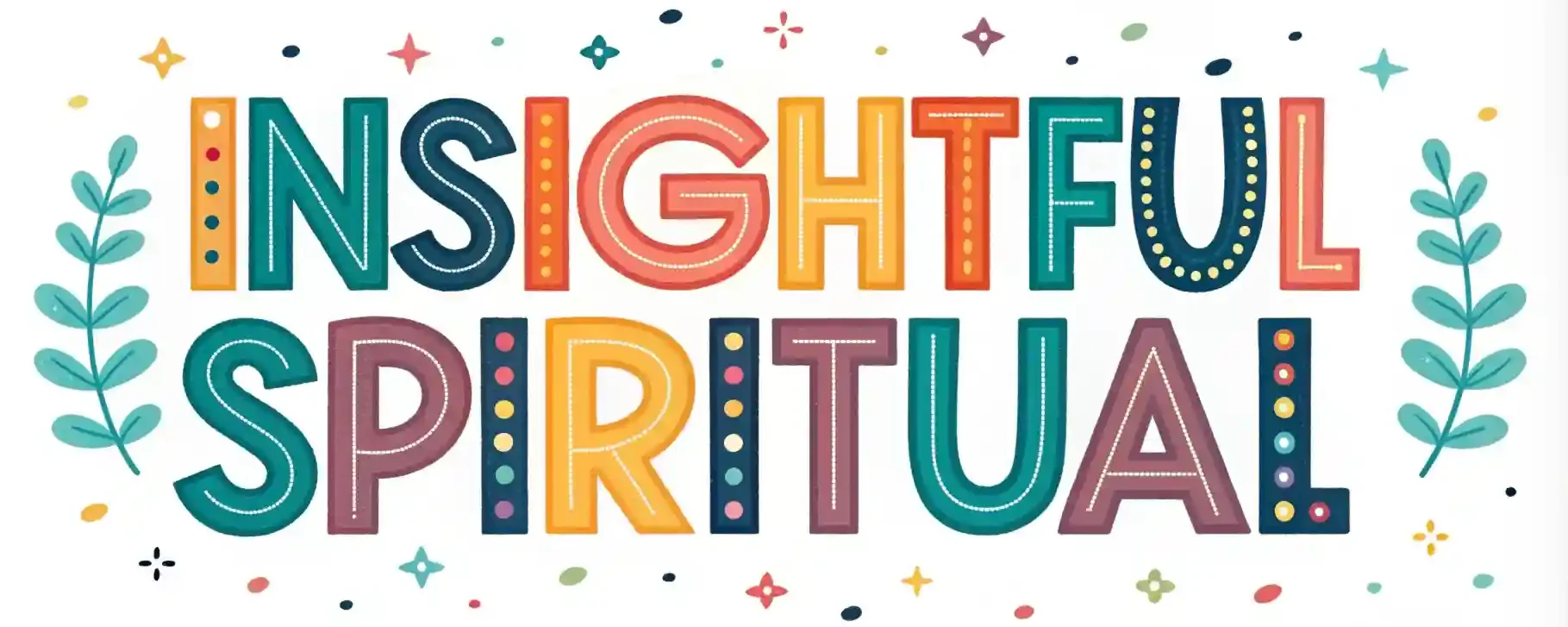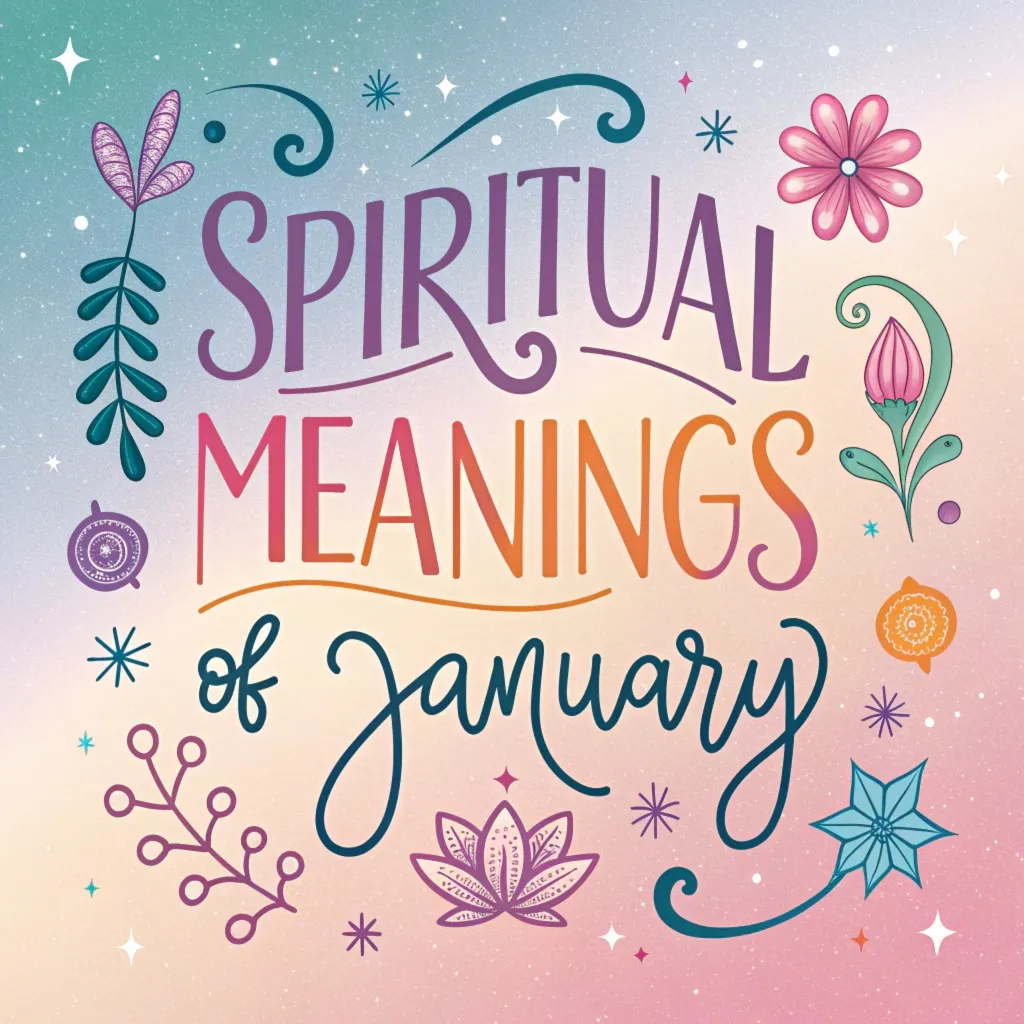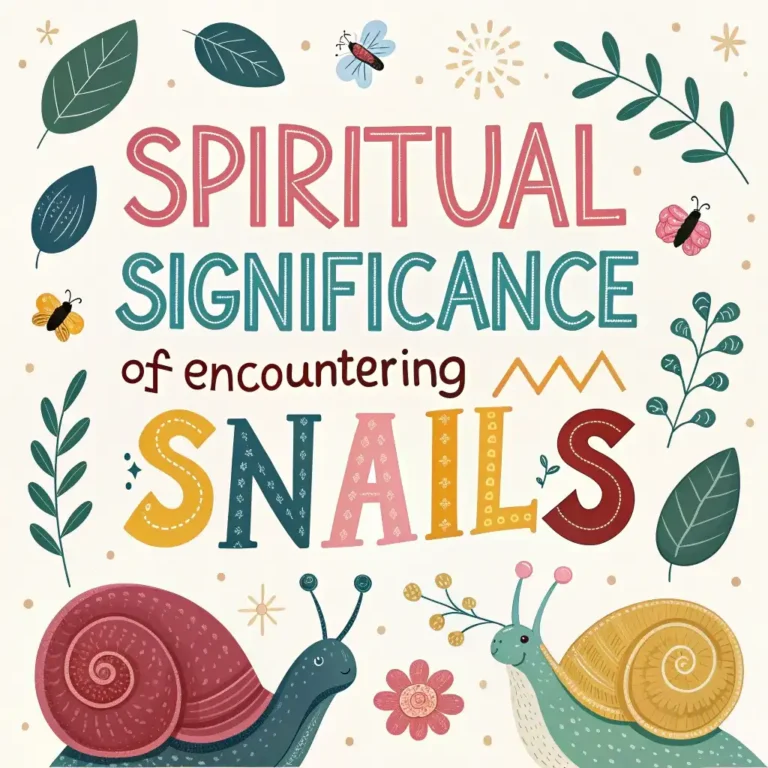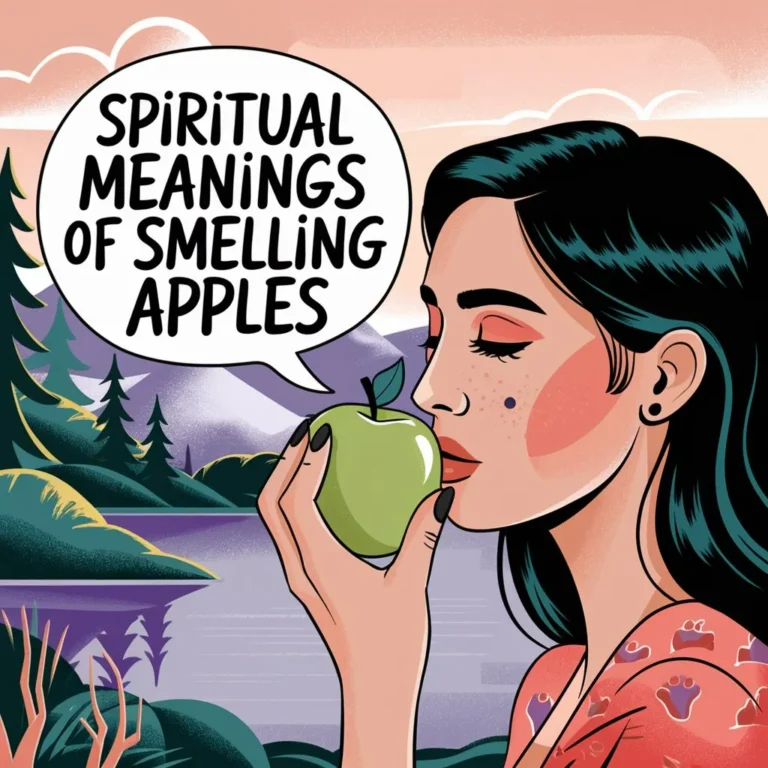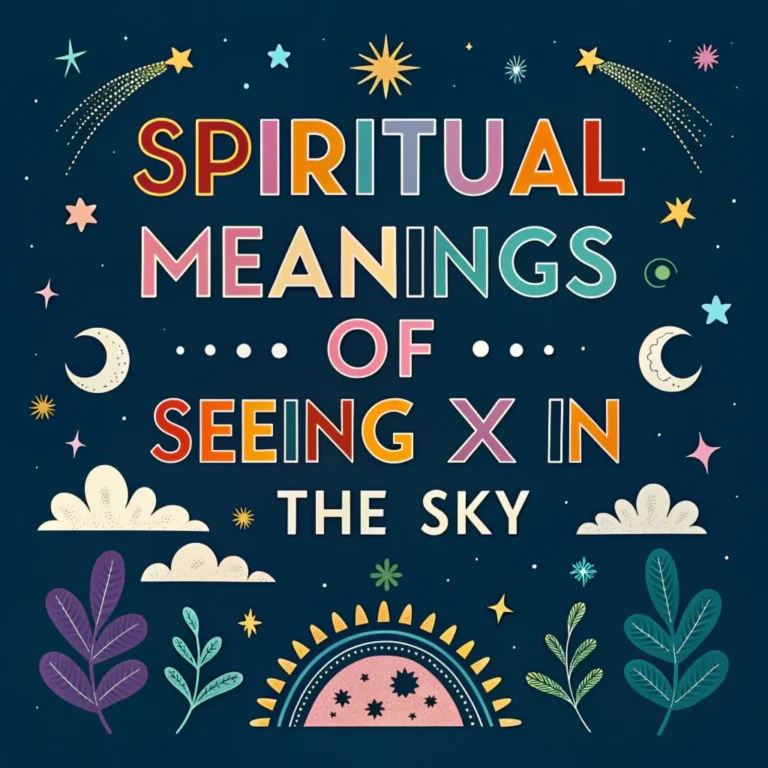11 Spiritual Meanings of January: Symbolism & Significance
January is a special month that starts the new year. It’s like opening a new book with blank pages ready for us to fill. This month has many interesting meanings and symbols that can help us understand ourselves better and grow as people.
In this post, we’ll explore 11 spiritual meanings of January. We’ll learn about the god it’s named after, the special stone and flower for this month, and even the full moon that appears in January. We’ll also talk about the colors of January and what they mean.
These ideas can help us think about our goals, be kinder to others, and feel hopeful about the year ahead. Let’s discover together what makes January so special and how we can use its energy to have a great start to the new year!
Key Takeaways
- January symbolizes new beginnings and fresh starts
- The month is named after Janus, the Roman god of transitions and doorways
- January’s garnet birthstone represents passion and courage
- The carnation, January’s birth flower, stands for unconditional love
- The Full Wolf Moon in January signifies community and survival
- January’s colors (red, white, and blue) symbolize energy, purity, and calmness
- The month is associated with reflection on the past and planning for the future
- January’s spirit animal, the owl, represents wisdom and intuition
- The month encourages setting intentions and making resolutions
- January’s cold weather symbolizes introspection and inner growth
- The month marks the gradual return of light after the winter solstice
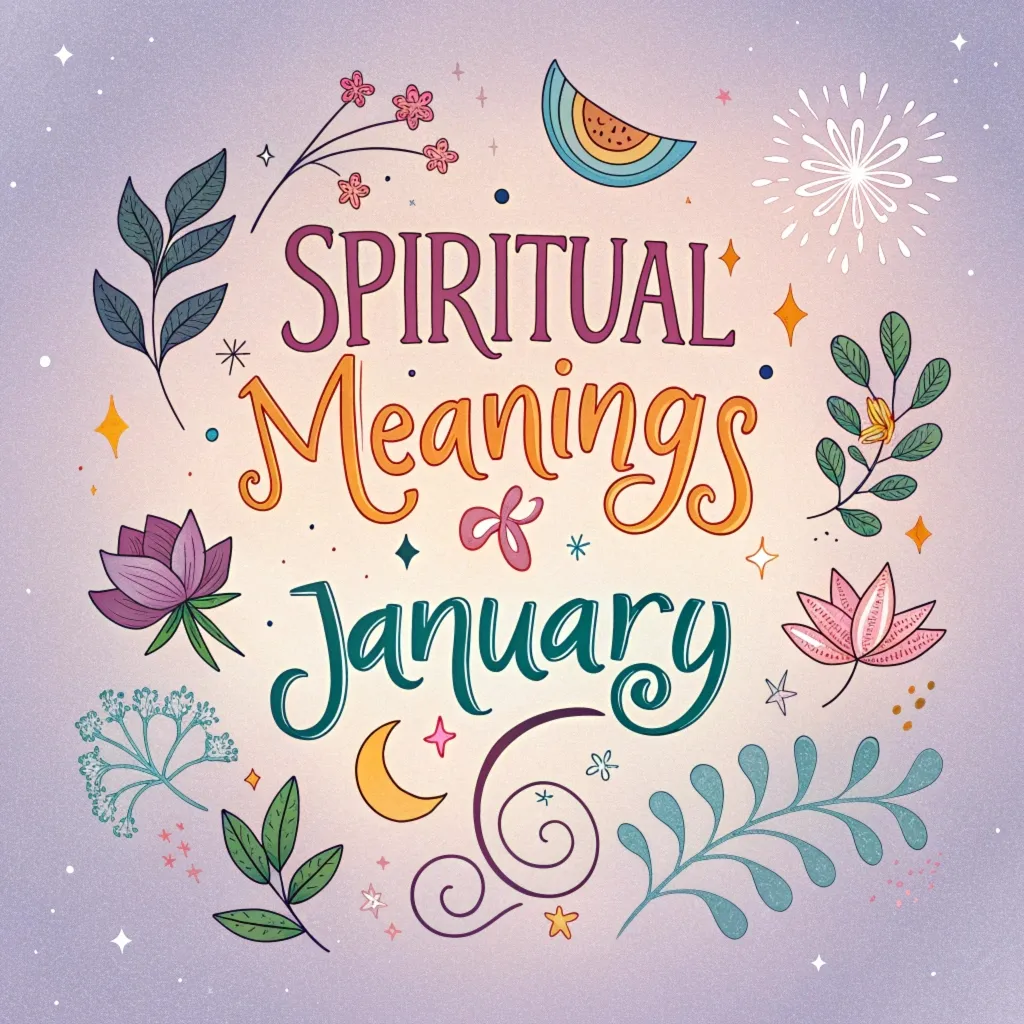
The Symbolism of New Beginnings
January marks the start of a new year, symbolizing fresh opportunities and clean slates. This month encourages us to leave behind the old and embrace new possibilities.
The energy of January inspires us to set intentions and make resolutions, fostering personal growth and transformation.
January is like a blank page in a new book. It gives us a chance to start over and try new things. Many people make promises to themselves about what they want to do better in the new year.
These promises are called resolutions. January’s energy helps us feel excited about making positive changes in our lives. It’s a time to think about what we want to achieve and how we can grow as people.
Janus: The Two-Faced God of Transitions
The month of January derives its name from Janus, the Roman god of doorways, transitions, and time. Janus is often depicted with two faces – one looking to the past and the other to the future.
This symbolism reminds us to reflect on our experiences while also looking forward with hope and anticipation.
Janus was a special god in ancient Rome. He had two faces, which might sound funny, but it had a special meaning. One face looked back at the past, and the other looked forward to the future.
This is why January is a good time to think about what happened last year and what we want to happen in the new year. It’s like standing in a doorway, looking both ways before we step into something new.
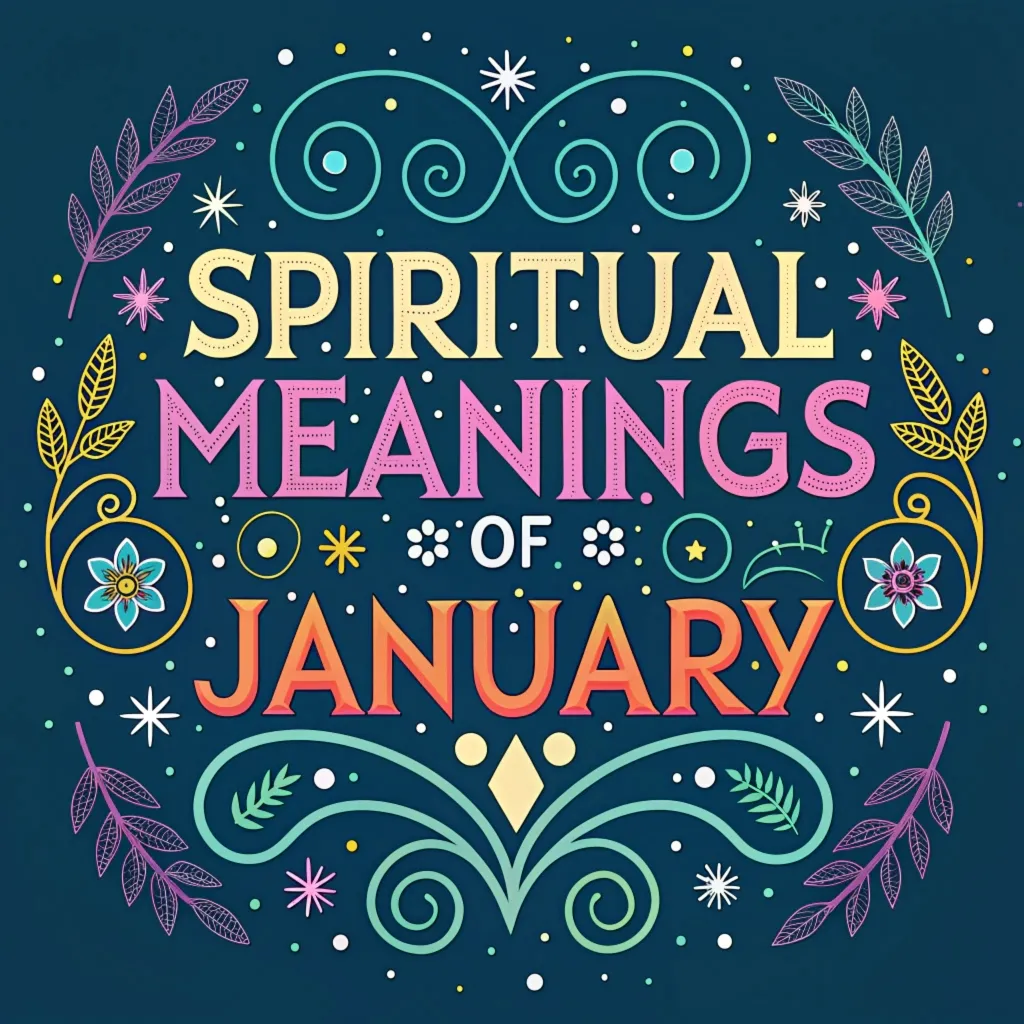
The Garnet: January’s Passionate Birthstone
January’s birthstone, the garnet, carries powerful spiritual significance. This deep red gemstone symbolizes passion, courage, and faithfulness.
Wearing or meditating with garnets during January can inspire us to pursue our goals with determination and vigor.
The garnet is a pretty red stone that belongs to January. It’s not just beautiful to look at; it also has special meanings. People believe that garnets can give us courage and help us stay true to our promises.
The deep red color reminds us of love and strong feelings. If you were born in January, you might like to wear a garnet. Even if you weren’t, looking at a garnet can make you feel brave and ready to chase your dreams.
Carnations: Blooms of Unconditional Love
The carnation, January’s birth flower, represents unconditional love and devotion. These resilient blooms remind us to nurture our relationships and express love freely.
The various colors of carnations each carry their own meanings, adding depth to this month’s floral symbolism.
Carnations are special flowers for January. They come in many pretty colors and have a sweet smell. These flowers teach us about love that doesn’t have any conditions. This means loving someone no matter what, just like how a parent loves their child.
Carnations are tough flowers that can grow in many places. This reminds us that love can be strong and last through hard times. Each color of carnation has its own special meaning, making them fun to give as gifts.
The Full Wolf Moon: Community and Survival
January’s full moon, known as the Wolf Moon, holds special spiritual significance. It symbolizes the importance of community and survival during challenging times. This lunar event encourages us to connect with others and find strength in unity.
The Wolf Moon is the name for the full moon in January. Long ago, people noticed wolves howling more during this time. They thought it was because wolves were hungry in the cold winter.
The Wolf Moon reminds us that working together is important, just like how wolves live in packs. It teaches us that when times are tough, we should help each other. This moon encourages us to spend time with friends and family, and to be kind to our neighbors.
Colors of January: Energy, Purity, and Calmness
The colors associated with January – red, white, and blue – each carry their own spiritual meanings. Red represents energy and passion, white symbolizes purity and new beginnings, and blue signifies calmness and clarity.
These colors can be incorporated into meditation practices or daily life to enhance January’s spiritual energy.
January has three special colors: red, white, and blue. Each color has its own meaning. Red is like a burst of energy. It can make us feel excited and ready to do things. White is like a clean, fresh start. It reminds us of new snow and new beginnings.
Blue is calm and peaceful, like a clear winter sky. These colors can help us feel different things. You can wear these colors or use them in your room to feel the special energy of January.
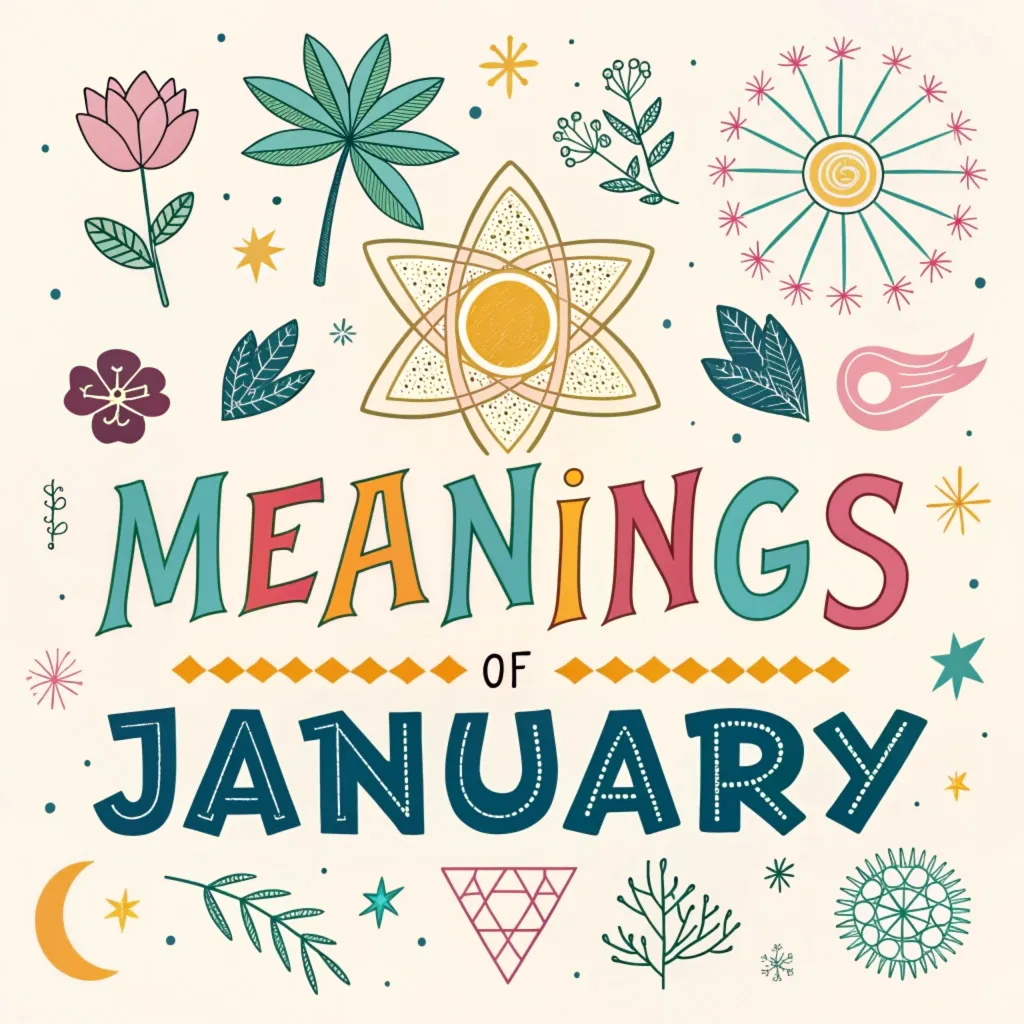
Reflection and Future Planning
January’s unique position at the start of the year makes it an ideal time for both reflection and future planning. This duality aligns with the symbolism of Janus, encouraging us to learn from our past experiences while setting goals for the future.
January is a good time to think about the past year and plan for the new one. It’s like looking in a mirror to see what we’ve done, and then looking through a telescope to see what we want to do next.
We can remember the good things that happened and learn from the not-so-good things. Then, we can make plans for what we want to do in the new year. This helps us grow and become better people.
The Owl: January’s Wise Spirit Animal
The owl, January’s spirit animal, embodies wisdom and intuition. Its ability to see in the dark symbolizes our capacity to gain clarity and insight during the long nights of winter.
Connecting with owl energy can enhance our spiritual awareness and decision-making abilities.
The owl is a special animal for January. Owls are known for being wise and seeing well in the dark. This is important because January has long, dark nights. The owl teaches us that we can find answers even when things seem unclear.
It shows us that we have wisdom inside us, just like how an owl knows where to find food in the dark. Thinking about owls can help us make good choices and understand things better.
Setting Intentions and Resolutions
January’s energy strongly supports the practice of setting intentions and making resolutions. This is a powerful time to align our actions with our deepest values and aspirations, paving the way for personal and spiritual growth throughout the year.
January is a great time to think about what we want to do better in the new year. These are called resolutions. It’s like making a promise to yourself. Maybe you want to be kinder, learn something new, or take better care of your body.
January’s special energy helps us feel ready to make these good changes. When we set goals in January, it can help us grow and become better people all year long.
Introspection in the Cold
The cold weather typical of January in many regions symbolizes a time of introspection and inner growth. Just as nature appears dormant on the surface, this is a period for internal development and nurturing our spiritual seeds.
January is often a cold month in many places. This cold weather can teach us something important. When it’s cold outside, we spend more time inside. This is like spending time inside our minds.
We can use this quiet time to think about our feelings and ideas. Just like plants grow roots underground in winter, we can grow stronger inside ourselves during January. This helps us be ready for new growth when spring comes.
The Return of Light
Following the winter solstice in December, January marks the gradual return of light. This symbolizes hope, renewal, and the cyclical nature of life. As the days slowly lengthen, we are reminded of the constant potential for growth and transformation.
After the shortest day in December, January brings more daylight little by little. This is like hope growing slowly. Each day gets a bit longer, just like how we can get a little better each day.
The growing light reminds us that good things come back around, like how spring always follows winter. It shows us that even when things seem dark, brighter days are coming. This can make us feel hopeful and ready for new beginnings.
FAQs
What is the spiritual significance of January’s name?
January is named after Janus, the Roman god of transitions, doorways, and time. This symbolizes the month’s role in bridging the past and future, encouraging reflection and forward-thinking.
How can I harness January’s spiritual energy?
You can harness January’s energy by setting intentions, practicing reflection, and embracing new beginnings. Meditating with garnets or incorporating January’s colors into your space can also enhance its spiritual influence.
What does the Wolf Moon symbolize in January?
The Wolf Moon symbolizes community, survival, and the importance of coming together during challenging times. It encourages connection and finding strength in unity.
How does January’s cold weather relate to spirituality?
January’s cold weather symbolizes a time for introspection and inner growth. It encourages us to turn inward, reflect, and nurture our spiritual development.
What is the significance of January’s birth flower, the carnation?
The carnation represents unconditional love and devotion. It reminds us to nurture our relationships and express love freely during this month of new beginnings.

Hi, I’m Aurelia Starfrost, your spiritual guide at InsightfulSpiritual.com. I love exploring ancient wisdom and modern practices to help you on your journey. With a focus on meditation and energy healing, I’m here to guide you to find solace within and discover your spiritual essence.
